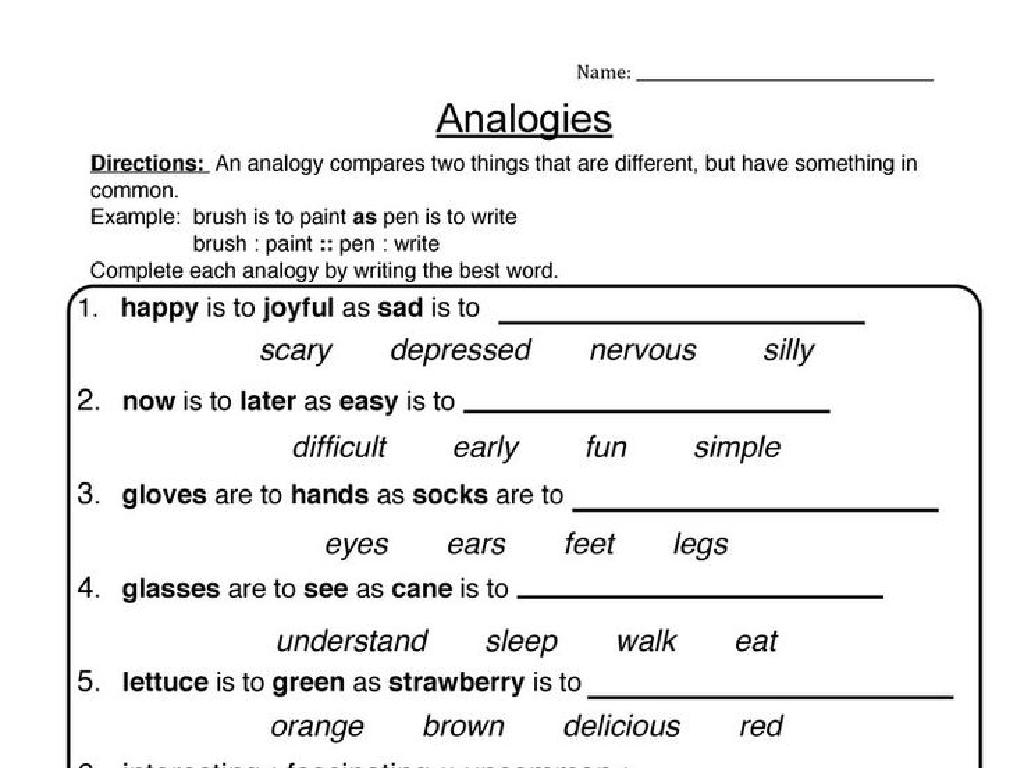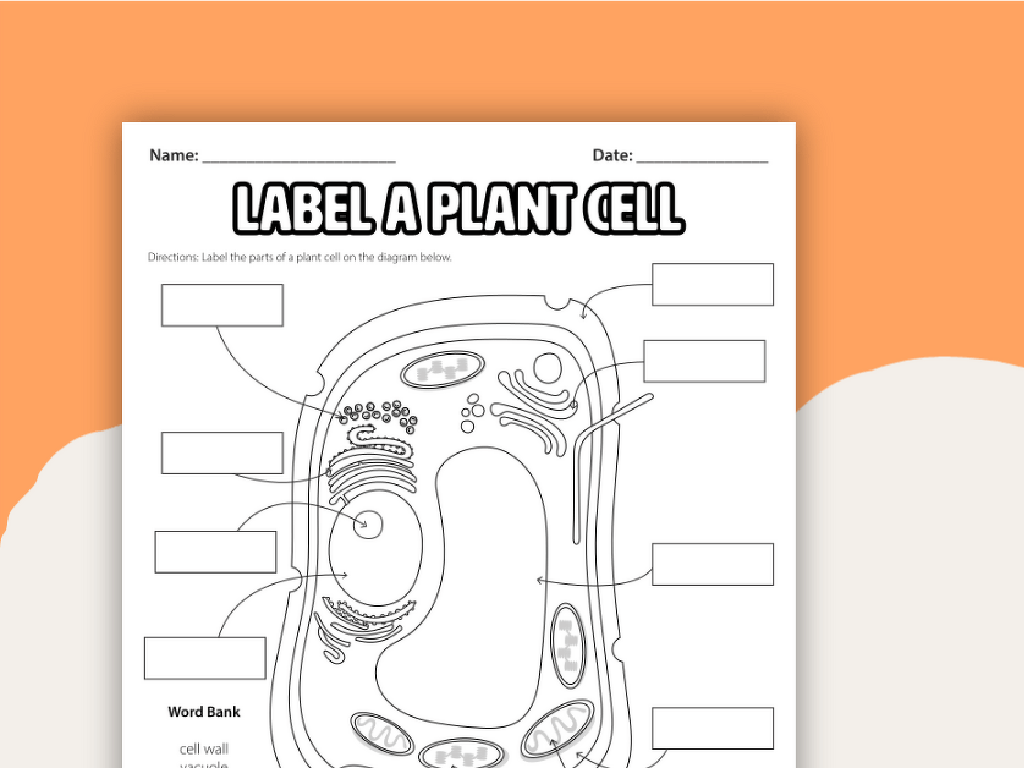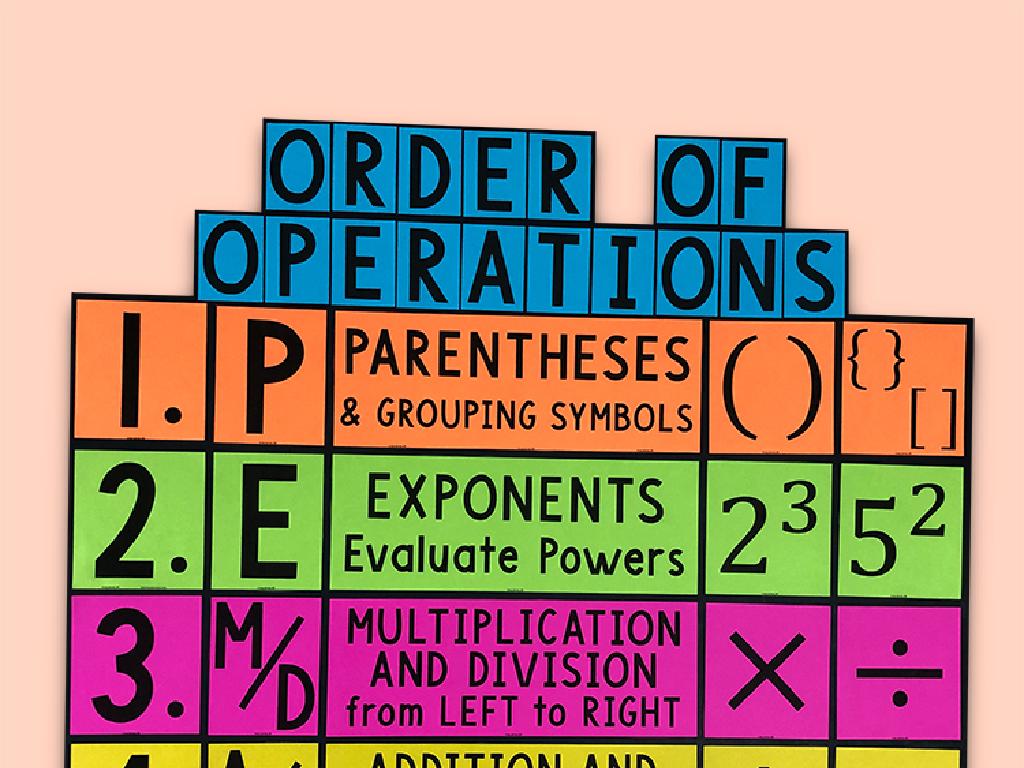Identify Ecosystems
Subject: Science
Grade: Sixth grade
Topic: Ecosystems
Please LOG IN to download the presentation. Access is available to registered users only.
View More Content
Welcome to Ecosystems!
– Understanding our environment
– Defining an ecosystem
– A community of living organisms interacting with their physical environment.
– Examples of ecosystems
– Forests, oceans, deserts, and ponds are all different types of ecosystems.
– Observing ecosystems around us
– Look at local parks, gardens, or even your backyard to find ecosystems.
|
This slide introduces students to the concept of ecosystems within the broader context of understanding our environment. Begin by discussing the importance of the environment and our interactions with it. Then, define an ecosystem as a system where plants, animals, and other organisms, as well as weather and landscape, work together to form a bubble of life. Provide examples of ecosystems such as forests, oceans, deserts, and ponds to help students visualize and differentiate between them. Encourage students to observe their surroundings to identify smaller-scale ecosystems they might encounter daily, like a garden or a park. This will help them understand the diversity of ecosystems and their significance in different geographical and biological contexts.
What Makes an Ecosystem?
– Ecosystem components: Biotic & Abiotic
– Biotic: living things; Abiotic: non-living things like water, rocks.
– Interactions among organisms
– Predation, competition, and symbiosis are examples of interactions.
– Non-living elements’ role
– Sunlight, water, and soil affect living organisms’ survival.
– Balance in ecosystems
|
This slide introduces students to the concept of ecosystems by breaking down its components into biotic and abiotic factors. Biotic factors include all living organisms within the ecosystem, while abiotic factors encompass the non-living elements like sunlight, water, and minerals that support life. Highlight the dynamic interactions between living organisms such as food chains, mutual benefits, and competition. Emphasize the importance of non-living elements, which provide the necessary resources for life. Discuss how a balance between these components is essential for the health and sustainability of an ecosystem. Encourage students to think of local examples and how each part of an ecosystem relies on the others.
Exploring Ecosystem Types
– Terrestrial ecosystems overview
– Forests, deserts, grasslands with unique features
– Aquatic ecosystems explained
– Freshwater vs. marine: different water bodies
– Diversity within ecosystems
– Each ecosystem has a variety of living organisms
– Importance of ecosystem variety
|
This slide introduces students to the concept of different types of ecosystems. Terrestrial ecosystems, which are land-based, include forests with their trees and wildlife, deserts with their extreme temperatures and specialized plants, and grasslands with vast open spaces and grazing animals. Aquatic ecosystems are categorized by their water salinity into freshwater, such as lakes and rivers, and marine, like oceans and seas. Emphasize the diversity of life forms and environmental conditions within each ecosystem type. Highlight the importance of this variety in maintaining the balance of our planet’s ecology. Encourage students to think about how the different ecosystems support various life forms and how they are interconnected.
Food Chains and Food Webs in Ecosystems
– Roles: Producers, Consumers, Decomposers
– Producers make food, consumers eat it, decomposers break down waste.
– Energy flow in ecosystems
– Sunlight to producers to consumers to decomposers.
– Each organism’s role in a food web
– Removing one species can affect the whole web.
– Balance and interdependence
|
This slide introduces students to the basic components of food chains and webs within ecosystems. Producers (like plants) create their own food using sunlight, consumers (like animals) eat the producers or other consumers, and decomposers (like fungi and bacteria) break down dead material, returning nutrients to the soil. Energy flows from the sun through these organisms, creating a balance. Each organism plays a crucial role, and the absence of one can disrupt the ecosystem. Discuss the interdependence of these roles and how they contribute to the health of the ecosystem. Encourage students to think of examples of producers, consumers, and decomposers in local ecosystems.
Exploring a Local Ecosystem
– Identify local ecosystems
– Examples: nearby forest, pond, or park
– Observe biotic & abiotic factors
– Biotic: plants, animals; Abiotic: rocks, water
– Discuss organism interdependence
– How plants/animals rely on each other
– Reflect on ecosystem’s balance
– Importance of each part in maintaining ecosystem health
|
This slide aims to introduce students to the concept of ecosystems by exploring their local environment. Start by defining an ecosystem and then guide students to identify examples they can find nearby, such as a forest, pond, or park. Discuss the biotic factors (living things like plants and animals) and abiotic factors (non-living things like soil, water, and rocks) that make up these ecosystems. Highlight the interdependence of organisms within an ecosystem, explaining how plants and animals rely on each other and their environment to survive. Finally, encourage students to think about how each component contributes to the overall balance and health of the ecosystem. This will set the stage for future lessons on the importance of biodiversity and conservation.
Human Impact on Ecosystems
– Human activities’ effects
– Activities can harm or help ecosystems, like pollution vs. planting trees.
– Conservation efforts
– Efforts include creating parks and protecting endangered species.
– Our role in ecosystems
– Each of us can contribute to ecosystem health through choices and actions.
– Balancing impact and preservation
|
This slide aims to educate students on the various ways humans affect ecosystems both positively and negatively. Discuss examples such as pollution, deforestation, and urban development as negative impacts, and contrast with positive actions like reforestation, wildlife conservation, and pollution control. Emphasize the importance of conservation and protection efforts, such as national parks and wildlife reserves. Encourage students to think about their personal roles in preserving ecosystems, like recycling, conserving water, and supporting conservation efforts. Highlight the need for balance between human activities and ecosystem preservation to ensure a sustainable future for all living beings.
Class Activity: Ecosystem Exploration
– Form groups for ecosystem study
– Research your chosen ecosystem
– Look into climate, flora, fauna, and more
– Present ecosystem characteristics
– Share with class: location, climate, wildlife, plants
– Identify biotic & abiotic elements
– Biotic: living things; Abiotic: non-living factors like water, rocks
|
This activity is designed to engage students in collaborative research and presentation skills while learning about ecosystems. Each group should select a different ecosystem (e.g., rainforest, desert, tundra, ocean) to research. They will need to identify key characteristics such as climate, typical flora and fauna, and any unique features. Additionally, students should distinguish between biotic elements (animals, plants, bacteria) and abiotic elements (sunlight, water, soil). Provide resources like books, documentaries, and internet access for research. Possible activities: creating posters, PowerPoint presentations, or dioramas. Encourage creativity and ensure each group understands their ecosystem’s complexity and the interdependence of its elements.
Ecosystems: Conclusion and Recap
– Review ecosystem components
– Producers, consumers, decomposers, and their interactions
– Ecosystems’ role in life
– Ecosystems support all life forms by providing essentials like air, water, and food
– Reflect on what we’ve learned
– Engage in Q&A session
– Prepare questions about ecosystems
|
This slide aims to summarize the key points covered in the lesson on ecosystems. Begin by reviewing the components of ecosystems, including producers, consumers, and decomposers, and how they interact with each other. Emphasize the critical importance of ecosystems in supporting life on Earth by providing necessary resources such as clean air, water, and food. Encourage students to reflect on the information they’ve learned throughout the lesson. Conclude with a Q&A session, prompting students to ask questions to clarify their understanding or to explore topics of interest further. This will help reinforce their knowledge and ensure they grasp the fundamental concepts of ecosystems.






